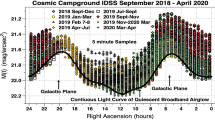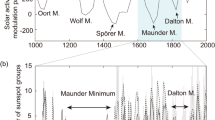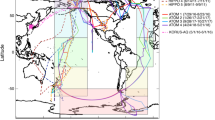Abstract
AFTER sunset this evening there was a peculiar pink flush in the western sky here similar to that which attracted so much attention in England last year. Twenty-five minutes after the sun had gone down, the colour was so vivid as to be reflected from the snows of Mount Baker (10,700 feet), which is about seventy-five miles east of this place. Shortly afterwards it disappeared, but reappeared thirty-five minutes later, prolonging the twilight and making the stars look green, finally dying away very gradually. The weather for the past twelve days has been very wet, and to-night's is the first clear sunset in that time. Fourteen days ago, when on the Fraser River, eighty miles from here, I saw after sunset a very brilliant aurora borealis. I write this thinking there may be a repetition of the phenomena in England, in which case this note may possess interest.
This is a preview of subscription content, access via your institution
Access options
Subscribe to this journal
Receive 51 print issues and online access
$199.00 per year
only $3.90 per issue
Buy this article
- Purchase on SpringerLink
- Instant access to full article PDF
Prices may be subject to local taxes which are calculated during checkout
Similar content being viewed by others
Author information
Authors and Affiliations
Rights and permissions
About this article
Cite this article
LAMPLUGH, G. The Sky-Glows. Nature 31, 28–29 (1884). https://doi.org/10.1038/031028d0
Issue date:
DOI: https://doi.org/10.1038/031028d0



